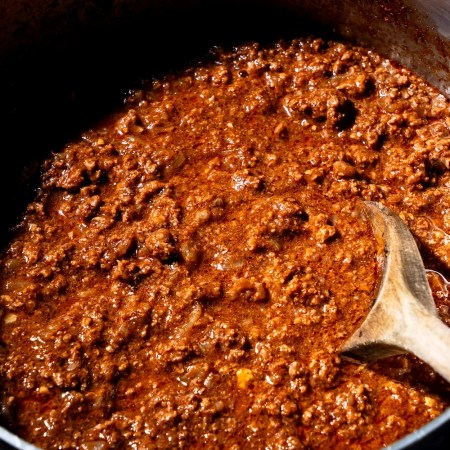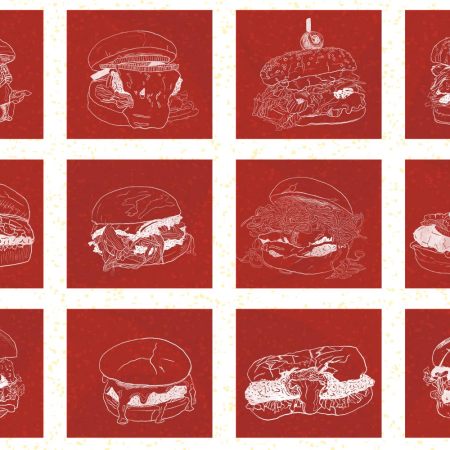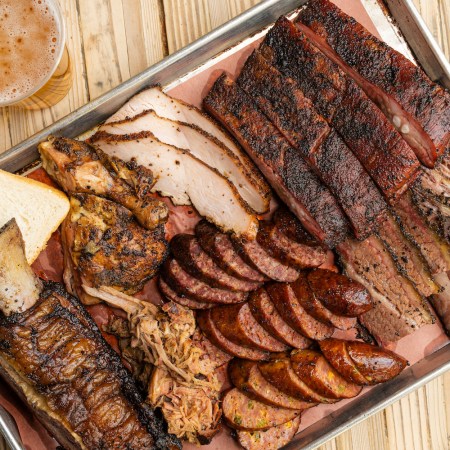We’re not saying you need to file a missing persons report or anything, but: doesn’t bacon seem a little harder to find these days than it used to be? It’s not like it’s vanished from menus or store shelves entirely — anyone who’s looking to indulge in some delicious bacon can easily do so. But something’s changed.
Compare the current moment to a handful of years ago. In 2014, New York food critic Adam Platt highlighted the lamb bacon at the opulent French restaurant Bâtard, for instance. A year later, Pete Wells of The New York Times noted the opening of a restaurant called BEC, which specialized in high-end bacon, egg and cheese sandwiches. Wells’s argument was that was not necessarily a sandwich that needed a high-end iteration, and yet: New York was getting exactly that.
And bacon was showing up everywhere. If you sought ice cream made with bacon in it, it wasn’t difficult to find. Did the idea of bacon-infused whiskey sound appealing? Head down to your local liquor store and stake out the shelves. This was no longer the purview of home enthusiasts willing to risk some well-made bacon and decent bourbon at home: this was a proper industry. This was, dare we say, Peak Bacon.
Nowadays, restaurants seem less likely to include innumerable variations on the classic theme of bacon in their dishes. But why?
Tyler Malek, co-founder of ice cream shop Salt & Straw — which has released a host of innovative savory ice creams over the years — says that they’re using less bacon lately when they come up with their monthly menus. “The candied bacon craze was real… and it was delicious,” he says, and then clarifies exactly why. “Bacon in ice cream is delicious for so many reasons, [and] when done correctly the salty fat from the bacon crisps up perfectly to be candied in a praline and folded into ice cream.”
For Malek, the reduction in bacon in their current recipes isn’t due to a frustration with bacon. He argues instead that bacon served as a great jumping-off point for exploring savory flavors—but now they’re looking to take what they learned from that and apply it elsewhere.
“I think bacon was a bit of a gateway for us in the food world and has opened us up to so many new techniques and ingredients,” he says. “For example, at Salt & Straw we use the same ‘candied bacon’ techniques to make a candied turkey-skin for thanksgiving, or a candied prosciutto to pair with cantaloupe, or chocolate-coated chicharrones.”
That’s a logical way of looking at it; chefs want to challenge themselves, after all. There are only so many ways to innovate with bacon—and it can be much more rewarding to be one of the first people to try out something new, as opposed to being the hundreth kitchen to experiment with bacon.
And a look at some recent food writing helps bear this out. Four years after his ode to the bacon, egg, and cheese, Pete Wells raved about the recently-opened 701West in The New York Times. Here, bacon is alluded to, but it’s as a point of comparison. Wells writes, “Asparagus dipped in aioli is a good idea, of course, but what if the asparagus has been steamed inside a wrapper of thinly shaved cedar until it is nearly as smoky as country bacon?”
Country bacon wouldn’t be the first thing that comes to mind as a point of comparison for asparagus — but that’s certainly an eye-catching (and mouth-watering) description. And the fact that Wells is writing about asparagus prepared in such a way that it evokes bacon suggests one of the other reasons why bacon may be a little harder to find these days than it once was.
Simply put: it isn’t just bacon that’s less ubiquitous than it used to me—it’s meat in general. Whether it’s the Impossible Burger making headlines for its appearance at fast-food chains (and soon, grocery stores) around the nation or vegan restaurants becoming far more widespread, meat is increasingly moving away from the center of food culture—to say nothing of the health benefits or environmental pluses of reducing your consumption of meat.
That same imbalance can be seen on the cocktail side of things. Cocktail writer Sam Slaughter, author of Are You Afraid of the Dark Rum?, sees bacon “as a trend that was here and now isn’t, as trends do.”
For Slaughter, though, that has to do with other trends in the cocktail world rather than anything inherent to bacon itself. He notes, “We’re seeing more sessionable drinks — spritzes, etcetera — which I don’t feel bacon lends itself to particularly well. When I think of bacon drinks, I’m thinking heavy sippers, not light and easy drinking.”
Perhaps bacon’s heyday will come again; perhaps we’ll all be drinking bacon-wrapped bacon with a bacon reduction while we sip bacon-infused bourbon with a candied bacon swizzle stick sometime soon. But even if not, the legacy of bacon’s time in the sun looks like it’s sparked a host of other fascinating culinary experiments — some even more delicious than our old favorites.
Join America's Fastest Growing Spirits Newsletter THE SPILL. Unlock all the reviews, recipes and revelry — and get 15% off award-winning La Tierra de Acre Mezcal.


















